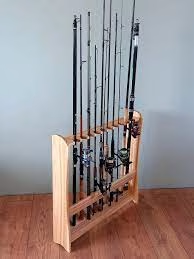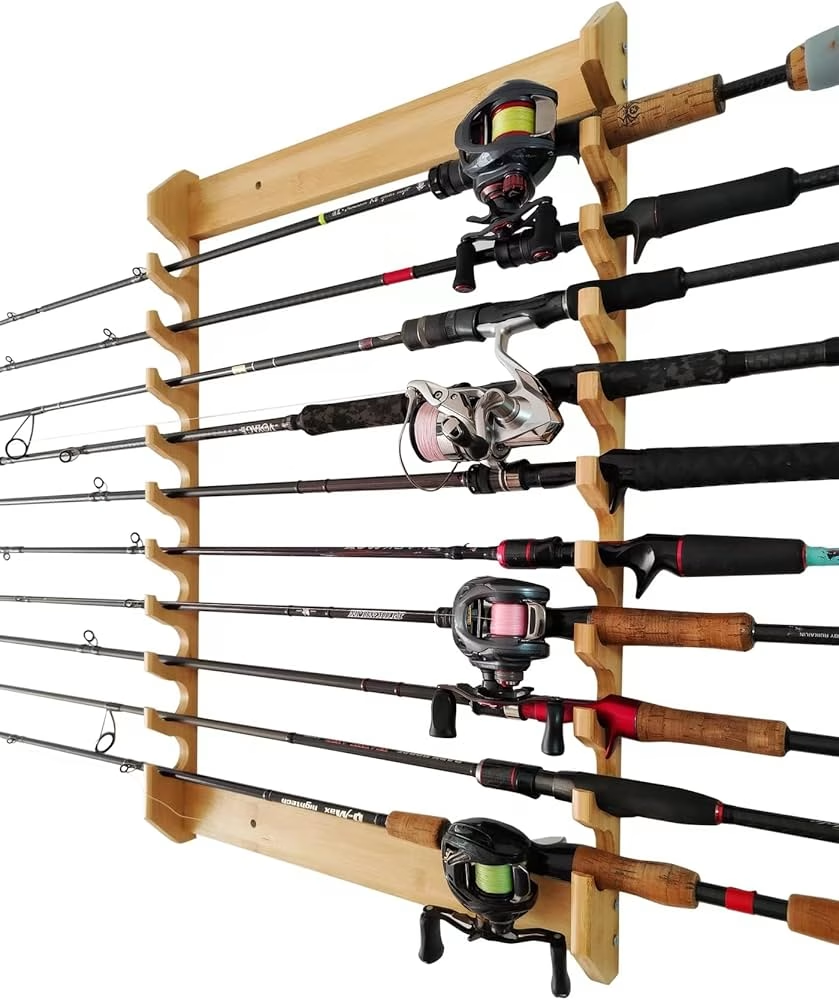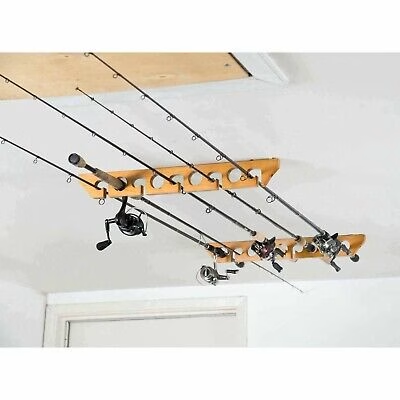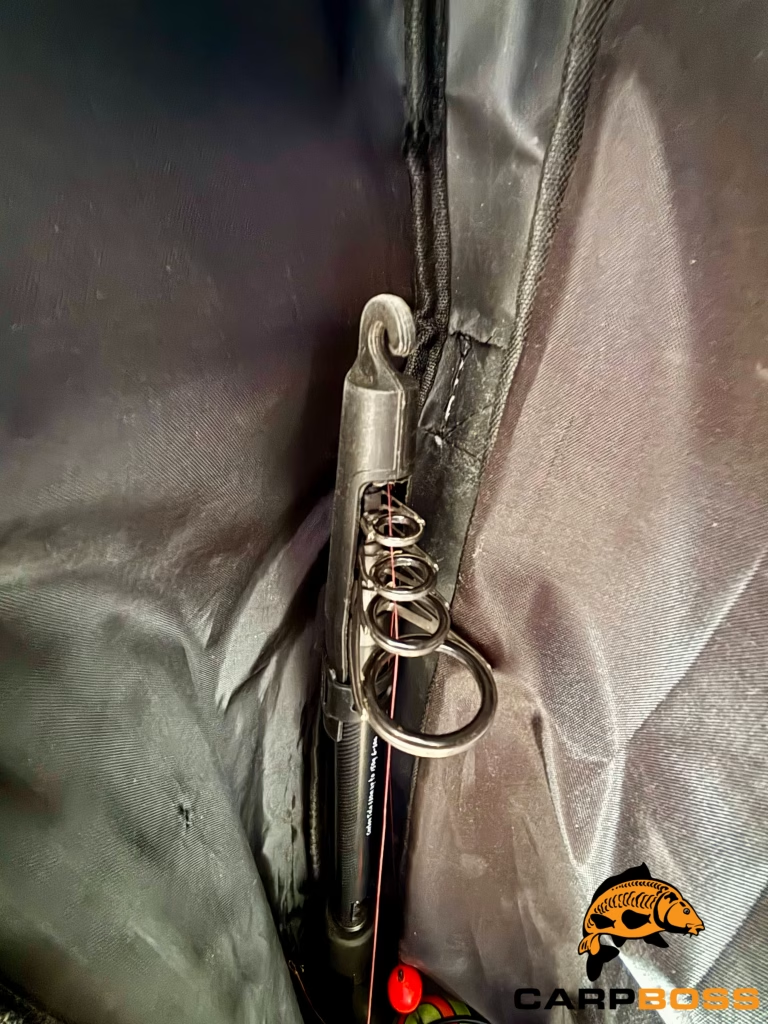The question from the title is one that every angler asked themselves. Bad storage for your rods can lead to costly repairs or even worse, permanent damage beyond repair. So while the answer is positive and you can store your fishing rods outside, there are certain things you should consider when doing so. Let’s see the best practices so your fishing equipment gets the treatment it deserves.
Optimal Storage Environment For Your Fishing Gear
Having an optimal storage environment for your fishing gear ensures that atmospheric factors won’t damage it. In other words, making sure that gear is safely stored to prevent potential damage from falling, kicking, or bending isn’t the only thing you should take into account.
I would say there are two key factors when it comes to storage space that’s located outside of the house. One is temperature, and the other one is obviously, protection from precipitation.
Temperature
To keep your gear in excellent condition you must have adequate temperature in the storage. Of course, this is closely related to your location and whether you have a basement for fishing rods, a garage, a tool shed, to something else.
In ideal conditions, you should aim for consistent temperature throughout the year. Obviously, this isn’t that easy in winter, especially in colder regions and storages like unheated garages. Ultimately, the temperature shouldn’t fall below zero.
Long exposure to extreme temperatures can cause permanent damage to your gear. Try to avoid it as much as possible. If you don’t have a choice and your long-term storage tends to get very cold or it’s exposed to direct sunlight, I strongly suggest you keep your rods and reels in sleeves designed specifically for this equipment.
Protection From Precipitation
Even though fishing poles and reels are meant to be used outdoors, it doesn’t mean they should be stored exposed to precipitation.
Exposure to excessive dampness or hail can cause rod damage that will be almost impossible to repair. Every proper storage should have a roof and walls, even if they are made from cheap materials. Your rods deserve to be dry, everything else is pure neglect!
Recommended Solutions For Storing Fishing Rods Outside
It is okay to store fishing rods outside as long as you use proper fishing rod racks. All three of them allow you to store your rods efficiently to save space while protecting them from damage because rods are not on concrete floors or in direct exposure to weather elements.
Vertical Rod Holders
Just as the name suggests, these fishing rod holders keep your rods vertically, meaning they will take up very little space wherever you keep them. They are made from various materials such as plastic, wood, foam, etc. Vertical holders come in different sizes, they can store from 4 rods, up to over 20! Of course, the latter ones are bigger and they can commonly be rotated.
The only negative thing I can think of about these holders is that they require a lot of vertical space. Especially if you have 13ft carp rods. Vertical rod holders are often seen in tackle shops because they are easiest to store while keeping them accessible to potential customers as well.

Wall-mounted Racks
These are the most common among anglers and you probably saw them in action. They are quite cheap and it’s very easy to install them. All you need are screws, a simple drill for home repairs, and a bubble level to ensure your wall-mounted racks are straight.
You basically screw two pieces that will hold your rod horizontally along the wall with the appropriate gap between them and that’s it. Both pieces have rubber grips that will keep your rods safe and ensure they don’t fall on the garage floor or where you plan to install these.

Overhead Storage
The last type of rod storage is very similar to wall-mounted racks. But, instead of a horizontal wall, you are using a ceiling to store your rods. This storing option takes the least amount of space you plan to use for something else because it’s, well, the ceiling. However, if your roof materials aren’t absorbing moisture very well, there’s a possibility that you’ll see water dripping from your rods in unheated storage.
Ceiling holders are the ones most commonly used among anglers who store their rods in the garage.

Best Practices For Storing Fishing Rods Outside
Using Protective Covers
Personally, I am not using any rack simply because my winter storage is in a hallway right outside the front door. But I use protective covers (rod sleeves and bags) on every single one of my rods.
Protective covers are great for several reasons. The soft padding they have and the waterproof materials from which they are made ensure your rods will be safe if they fall (God forbid) and sunlight or extreme cold can’t do any damage.
Similar protective covers can be found for fishing reels as well.
Ultimately, having these for your most expensive equipment is a must if you want to keep your gear in top condition for the next fishing season.
Positioning Rods Strategically
Positioning your rods in a way that doesn’t block pathways used by people in your household will significantly lower the chances of them being damaged. That is one of the reasons anglers often choose garage ceilings as the perfect place for installation of rod holders.
Also, make sure that there is enough space between rods. Especially when you store them in bags for 3 or more rods. Having enough space guarantees fewer broken guides and tips.
Additional Tips and Accessories To Protect Your Fishing Tackle
Keeping your rods safe doesn’t mean that the rest of your equipment shouldn’t be protected. Here are some tips and accessories I recommend you start using.
Tackle Boxes
Fishing lines, swivels, leads, clips, bait screws, feeders, floaters, etc. They all need to be stored properly. Having multiple tackle boxes is a must for any angler. Storing and keeping all of this “smaller” gear isn’t good only for durability.
Having everything stored and organized will make your fishing trips easier as well. Just pick up the box that has a tackle for a certain discipline in it and you are good to go. No more looking for the right tackle and rearranging stuff between the boxes.
Guide Protectors
Guides are one of the most fragile components on your rod. Make sure that you use either single protectors on each rod (2-piece carp rods) or big single ones commonly seen on telescopic rods. Using these will ensure that tips and guides have additional protection.

Box for Hooks
“Hook keepers” is what I like to call the boxes where I store my hooks. Having these is essential if you want to neatly organize your hooks while making sure they aren’t getting dull.
Ultimately, it is okay to store your fishing rods outside. As long as you store them in the right way and protect them with the right accessories.
